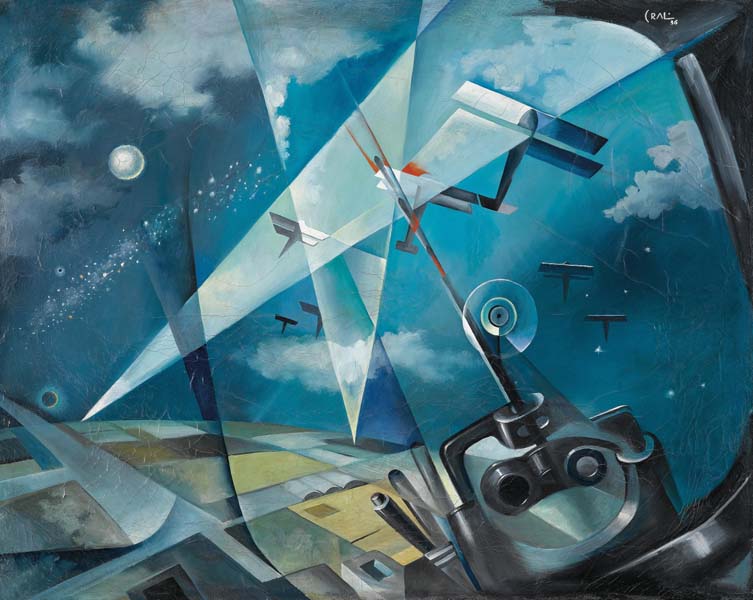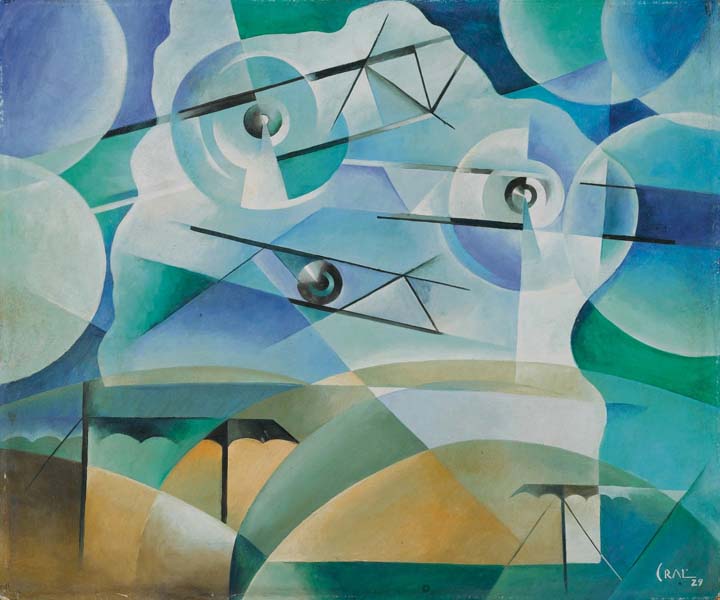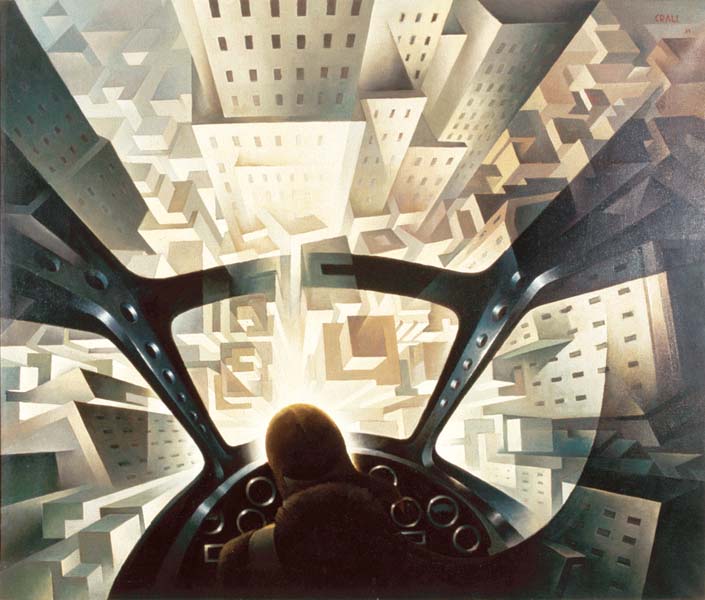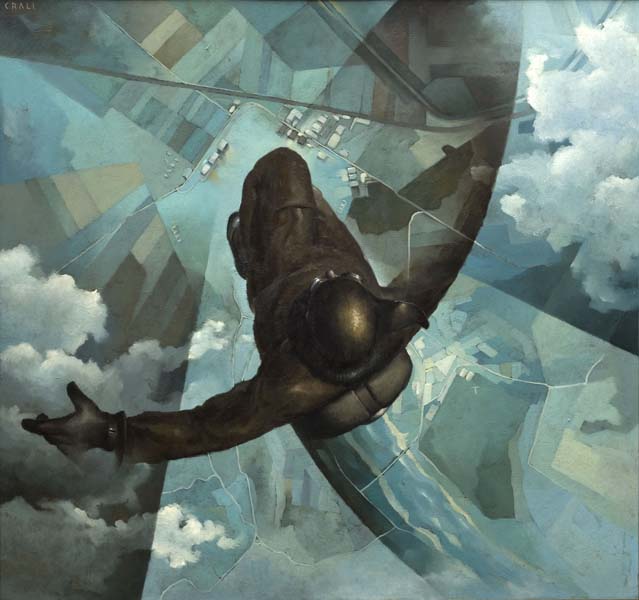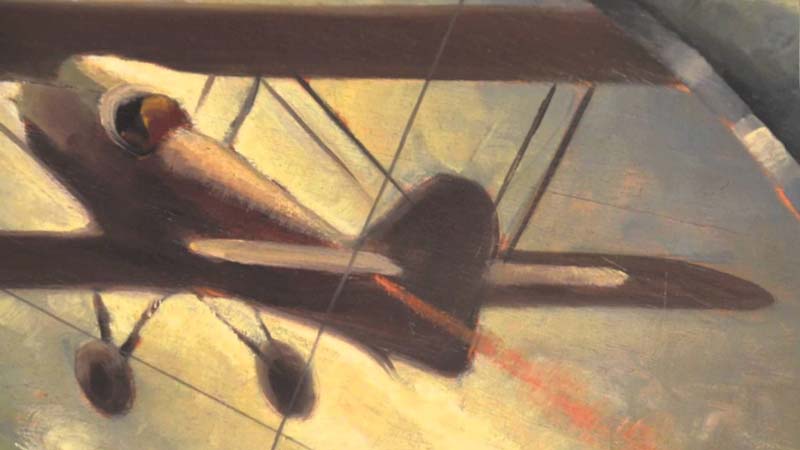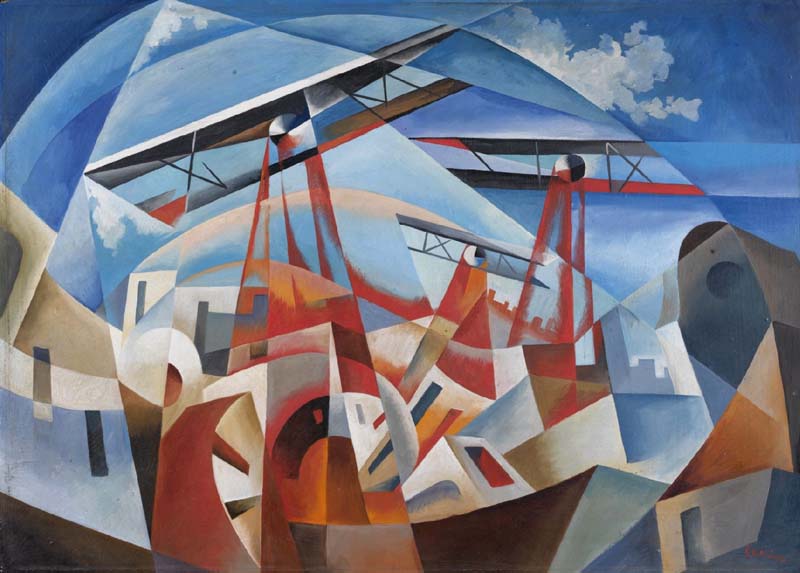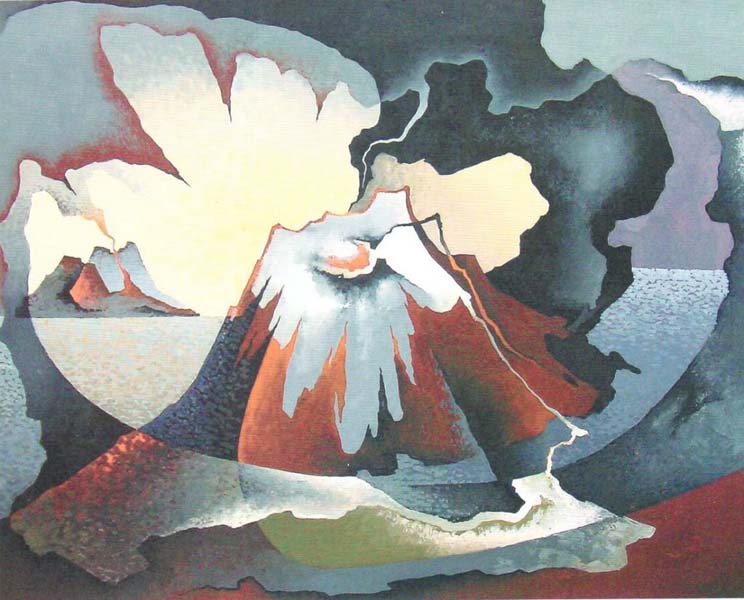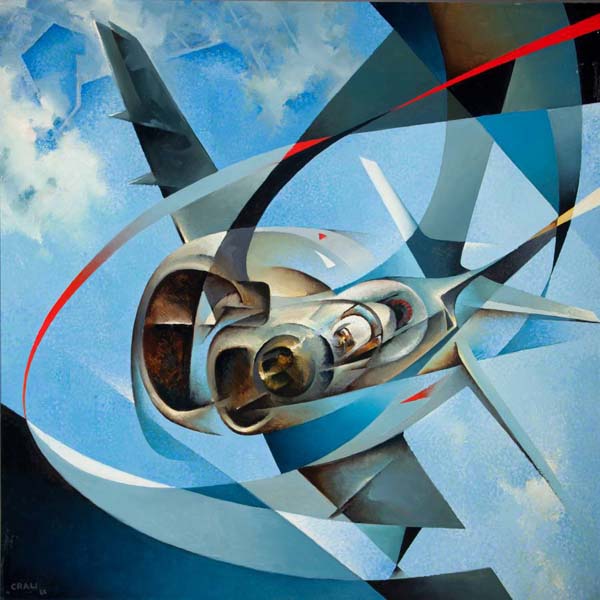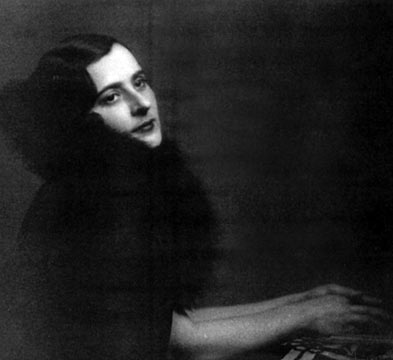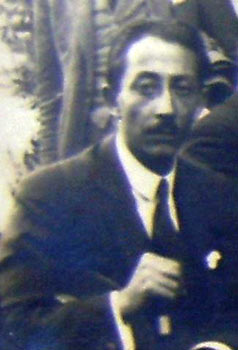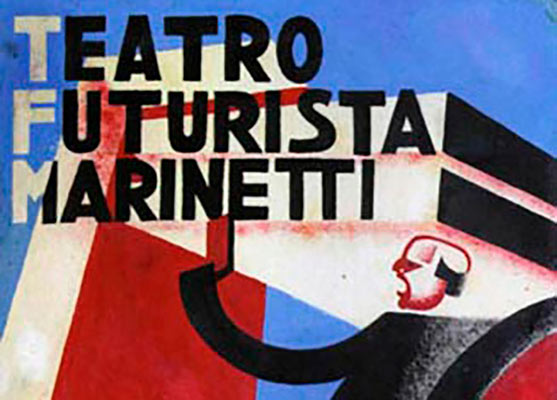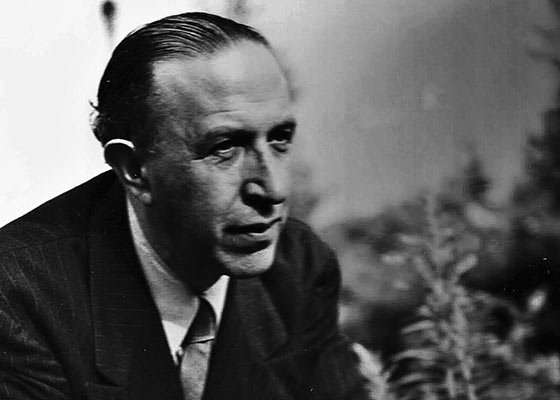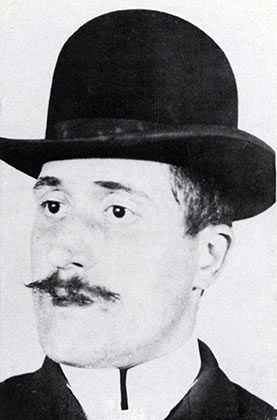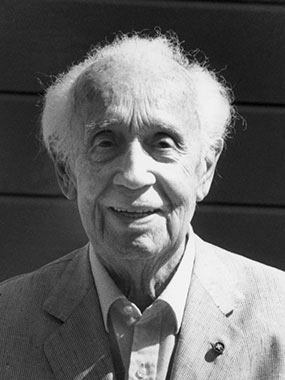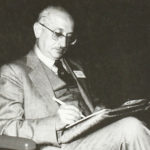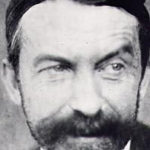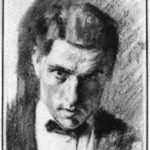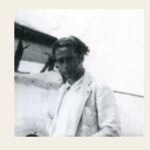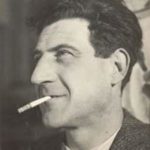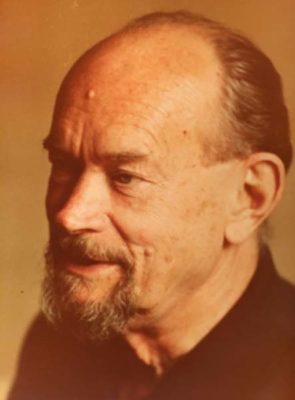
Crali Tullio
Nacque a Igalo, oggi periferia di Herceg Novi, in Dalmazia, il 6 dicembre 1910. Giunse a Gorizia nel 1922, studiò all’Istituto tecnico e scoprì il movimento futurista grazie a delle riviste. Nel 1928 conobbe Pocarini, ma l’anno di svolta fu il 1929, quando aderì ufficialmente al movimento futurista giuliano, in concomitanza con la pubblicazione del manifesto Aeropittura futurista; instaurò un rapporto epistolare con Marinetti, al quale fu legato da sentimenti di profonda stima e amicizia, ed esordì alla II Esposizione goriziana di belle arti.
Nel 1932 si diplomò all’Accademia di belle arti di Venezia. Affascinato dal volo, che iniziò a praticare dagli anni Trenta, avrebbe dedicato una considerevole parte della sua produzione pittorica all’aeropittura, tanto da esporre le proprie opere alle principali mostre del genere a livello regionale (Gorizia e Trieste, 1931), nazionale (Milano, 1931 e 1933; Padova, 1931; Livorno, 1933; Torino, 1933) e internazionale (Parigi e Bruxelles, 1932; Vienna e Atene, 1935). Nel 1933 fu presente alla I Mostra nazionale d’arte futurista di Roma. Dal 1934 al 1942 espose alle Biennali di Venezia. Nell’edizione del 1940 Marinetti curò l’allestimento di una personale di C., che nell’occasione si vide acquistare dai Civici musei di Udine il dipinto Prima che si apra il paracadute. Fu presente anche alle Quadriennali di Roma del 1935, 1939 e 1943.
Parallelamente all’aeropittura, sviluppò anche una ricerca polimaterica, sconfinante nell’astrattismo, che avrebbe riproposto in opere del dopoguerra e nelle composizioni denominate Sassintesi. C. fu attivo anche nel campo della scenografia, disegnò figurini di moda femminile, inventò la camicia anticravatta e la giacca senza risvolti. Suo è il progetto del Sacrario ai caduti in Africa orientale a Gorizia, distrutto nel 1945, e in collaborazione con Rudolf Saksida realizzò il Museo di guerra sul monte Sabotino, pure smantellato. Firmò manifesti per raduni sportivi e iniziative culturali, curò il numero unico di «Vita isontina» dedicato a Marinetti e al futurismo. Durante la seconda guerra mondiale si occupò di piani di mascheramento degli aeroporti. Negli anni 1941-1942 organizzò serate futuriste a Gorizia, Trieste e Udine. Nel 1944 redasse le Aeromusiche d’alfabeto in libertà assieme a Marinetti e a Raoul Cenisi, al quale era accomunato dai natali dalmati. Nel dopoguerra si trasferì a Torino (1946), quindi fu a Parigi (1950-1958), al Cairo (1962-1966) e infine a Milano, dove morì il 5 agosto 2000.
(English)
Tullio Crali (22 February 1910, in Igalo – 5 August 2000, in Milan) was an Italian artist associated with Futurism. A self-taught painter, he was a late adherent to the movement, not joining until 1929. He is noted for realistic paintings that combine “speed, aerial mechanisation and the mechanics of aerial warfare”, though in a long career he painted in other styles as well.
Crali was born in the Bay of Kotor on the coast of Montenegro. His family lived in Zara until 1922, when they moved to Gorizia. At the age of fifteen, while a student at the local technical institute, Crali discovered Futurism. He took up painting, influenced by Giacomo Balla and Enrico Prampolini.
In 1928 Crali flew for the first time. His enthusiasm for flying and his experience as a pilot influenced his art. In 1929, through Sofronio Pocarini, he made contact with Marinetti, the founder of Futurism, and joined the movement. In the same year aeropittura was launched in the manifesto, Perspectives of Flight, signed by Benedetta, Depero, Dottori, Fillia, Marinetti, Prampolini, Somenzi and Tato. The manifesto stated that “The changing perspectives of flight constitute an absolutely new reality that has nothing in common with the reality traditionally constituted by a terrestrial perspective” and that “Painting from this new reality requires a profound contempt for detail and a need to synthesise and transfigure everything.”
Despite his relative youth, Crali played a significant part in aeropittura. His earliest aeropitture represent military planes, Aerial Squadron and Aerial Duel (both 1929). In the 1930s, his paintings became realistic, intending to communicate the experience of flight to the viewer. His best-known work, Nose Dive on the City (1939), shows an aerial dive from the pilot’s point of view, the buildings below drawn in dizzying perspective.
Crali exhibited in Trieste and Padua. In 1932 Marinetti invited him to exhibit in Paris in the first aeropittura exhibition there. He participated in the Rome Quadrennial in 1935, 1939 and 1943 and the Venice Biennale of 1940. At that time Crali was researching signs and scenery, leading in 1933 to his participation in the film exhibition Futuristi Scenotecnica in Rome. In 1936 he exhibited with Dottori and Prampolini in the International Exhibition of Sports Art at the Berlin Olympics.
Crali’s declamatory abilities and his friendship with Marinetti led him to organise Futurist evenings at Gorizia, Udine and Trieste, where he read the manifesto Plastic Illusionism of War and Protecting the Earth which he had co-authored with Marinetti. He also published a Manifesto of Musical Words – Alphabet in Freedom.
Crali lived in Turin after the war, where he continued to promote Futurist events. Despite the ending of the Futurist movement with the death of Marinetti in 1944 and its Fascist reputation, Crali remained attached to its ideals and aesthetic.
Between 1950 and 1958 he lived in Paris, making occasional visits to Britain. He moved to Milan in 1958 where he remained (apart from a five-year period teaching at the Italian Academy of Fine Arts, Cairo) for the rest of his life. In Milan he began to collect and catalogue documents relating to his life and work. He donated his archive and several of his works to the Museo di arte moderna e contemporanea di Trento e Rovereto.
In 1959 he published the first post-war Futurist manifesto Sassintesi (“Stone Syntheses”). In it he advocated a new form of artistic expression using natural materials – pebbles, stones and rocks formed of various minerals. “The inherent qualities of colour, form, translucence, texture, etc. were to suggest, develop and determine the idea of the artist, while their appearance and positioning produced a harmonious composition that relied much on the stones’ natural symbiosis with the cosmos.” His sassintesi were exhibited in Milan in 1961. He tried to revive aeropittura in the late 1960s in a manifesto Orbital Art. His painting Frecco Tricolori (1966) depicts jet fighter planes. He continued to paint, sculpt, teach and lecture throughout the ‘sixties, ‘seventies and into the ‘eighties.
At his own wish, Crali was buried at Macerata, which remains the home of his family.
